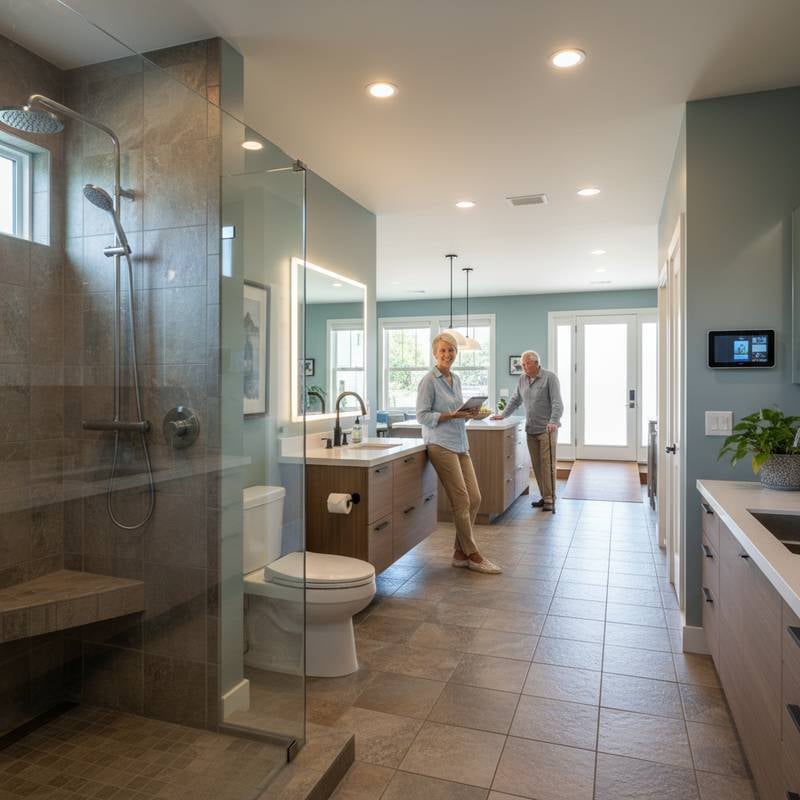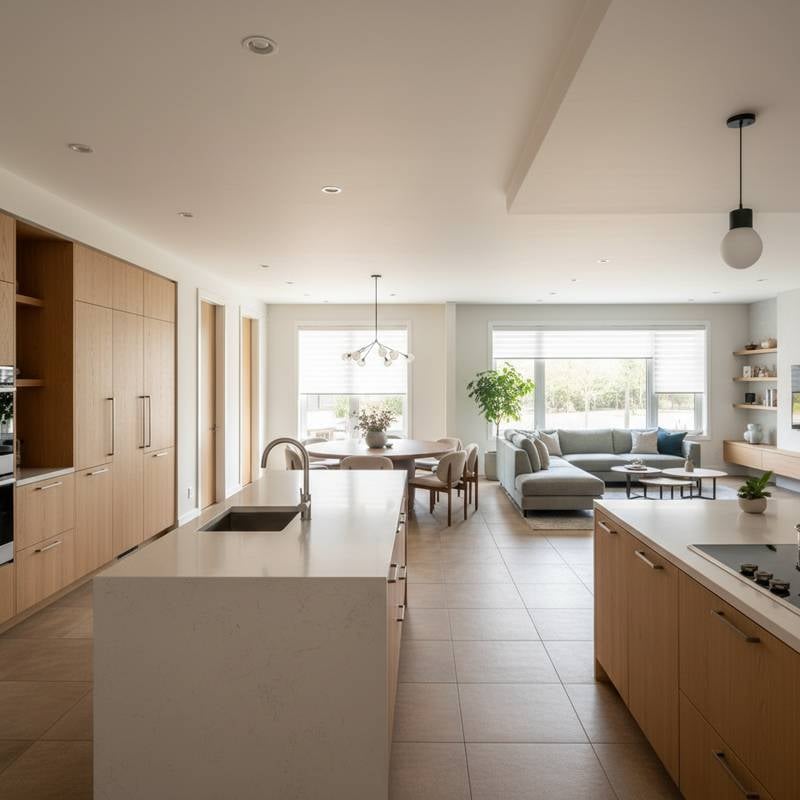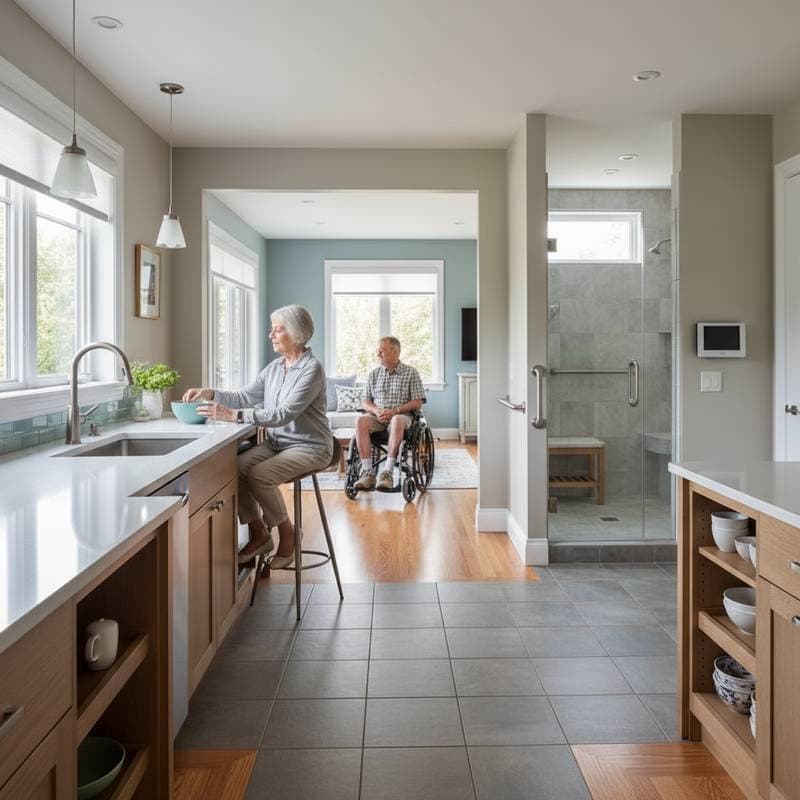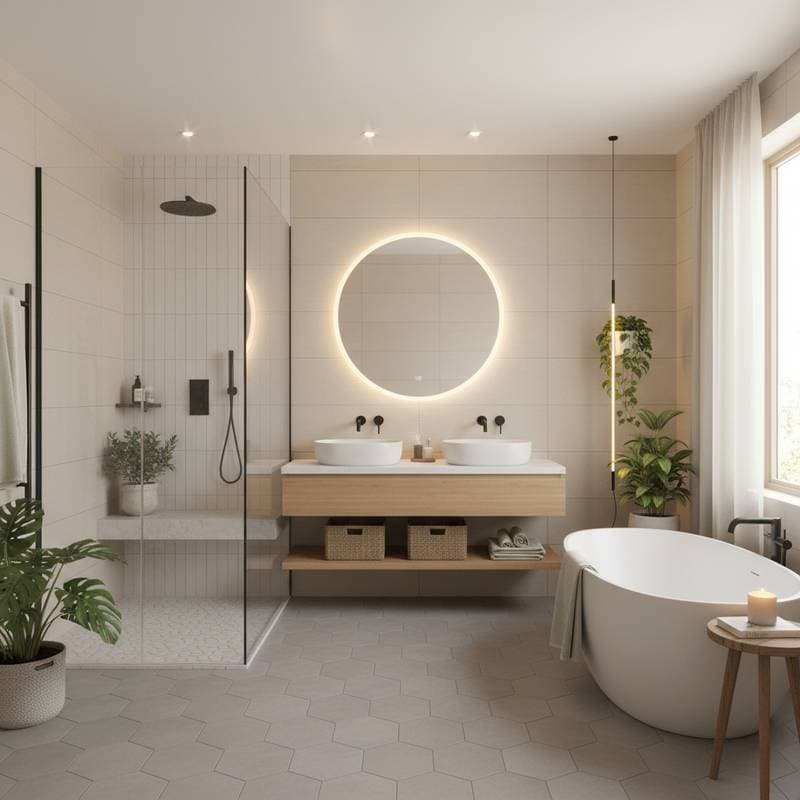Universal Design Principles for Lifelong Home Adaptability
A well-designed home accommodates the evolving needs of its occupants throughout their lives. Universal design achieves this goal by integrating features that ensure safety, comfort, and accessibility for individuals of all ages and abilities. Homeowners who incorporate these principles gain the flexibility to age in place, support family members with varying mobility levels, or enhance the property's market appeal for future sales.
This guide examines the core elements of universal design, highlights practical implementation strategies for remodeling projects, provides cost estimates based on common upgrades, and offers guidance on engaging professionals to execute these changes effectively.
Core Principles of Universal Design
Universal design rests on seven foundational principles, originally developed by architect Ronald Mace, that prioritize inclusivity without compromising aesthetics or functionality. These principles guide renovations to create intuitive environments.
- Equitable Use – Design elements allow people with diverse abilities to engage with the space on equal terms. For instance, doorways wide enough for wheelchairs also facilitate easy passage for parents pushing strollers.
- Flexible Use – Spaces adapt to different preferences and capabilities. Adjustable shelving in closets or height-variable kitchen islands accommodate both seated and standing users.
- Simple and Intuitive Operation – Navigation requires no prior experience or complex instructions. Clear signage, logical layouts, and color-coded controls make rooms user-friendly for children, seniors, or those with cognitive challenges.
- Perceptible Information – Communication of essential details occurs through multiple senses. Tactile indicators on appliances or visual alarms supplement auditory cues for broader accessibility.
- Tolerance for Error – Features minimize hazards from accidental actions. Rounded edges on furniture and automatic shut-off valves on faucets prevent injuries or mishaps.
- Low Physical Effort – Operations demand minimal strength or endurance. Lever-style door handles and touchless faucets reduce strain for arthritic hands or temporary limitations.
- Size and Space for Approach and Use – Ample dimensions support comfortable interaction. Hallways at least 36 inches wide and clear floor space around fixtures enable maneuvering with assistive devices.
Applying these principles during planning ensures homes remain relevant and supportive over decades.
Essential Features for Accessible and Stylish Homes
Universal design integrates seamlessly with contemporary aesthetics, avoiding the stark appearance of institutional settings. Homeowners can select durable, attractive materials that serve dual purposes of beauty and utility.
In entryways, install zero-step thresholds with durable stone or composite flooring to eliminate tripping hazards while maintaining curb appeal. Ramps with gentle slopes, integrated into landscaping, provide discreet access without altering the home's facade.
Kitchens benefit from pull-out cabinets, pull-down shelving, and open layouts that allow 48-inch clearances for wheelchair navigation. Opt for matte-finish appliances with front-mounted controls to simplify use and cleaning.
Bathrooms represent a high-impact area for upgrades. Curbless showers with built-in benches and fold-down grab bars offer safety without sacrificing spa-like luxury. Wall-mounted sinks free up floor space for easier cleaning and mobility.
Throughout the home, incorporate smart lighting systems with motion sensors and dimmers, along with non-slip flooring like cork or luxury vinyl tiles. These choices not only enhance daily convenience but also boost energy efficiency and hygiene.
Cost Considerations for Universal Design Upgrades
Budgeting for universal design varies by project scope, location, and material quality. Basic retrofits, such as installing lever handles or adding grab bars, typically range from $500 to $2,000 per room. More extensive changes, like widening doorways or reconfiguring bathrooms, may cost $10,000 to $30,000, depending on structural needs.
Kitchen remodels incorporating adjustable counters and accessible storage often fall between $15,000 and $50,000. Whole-home adaptations, including electrical updates for smart features, can exceed $100,000 but yield long-term savings through reduced maintenance and healthcare costs.
Factor in potential rebates from programs like those offered by the U.S. Department of Housing and Urban Development for accessibility improvements. Consulting a professional early helps identify cost-effective options and avoid overruns from unforeseen code compliance issues.
Engaging Professionals for Successful Implementation
Certain projects demand expertise to ensure compliance and durability. Seek contractors certified by organizations such as the National Association of Home Builders in aging-in-place specialties. They possess knowledge of the Americans with Disabilities Act guidelines and local regulations.
Engage professionals for tasks involving load-bearing walls, such as installing pocket doors or elevating floors for level entries. Electrical rewiring for outlet placements at 15-48 inches high or plumbing for relocated fixtures also requires licensed experts to prevent safety risks.
Request portfolios of past universal design work and verify insurance coverage. Discuss your long-term vision during initial consultations to align features with anticipated needs, such as future caregiving spaces or multigenerational living arrangements.
Addressing Common Concerns in Universal Design
How does universal design differ from aging-in-place modifications?
Universal design encompasses broader inclusivity for all users, including children and those with temporary injuries, whereas aging-in-place targets senior-specific adaptations like stairlifts.
Is retrofitting possible in older homes?
Absolutely. Start with non-invasive additions like motion-activated lighting or adjustable thermostat mounts, progressing to modular ramps if structural assessments permit.
Will these features affect home resale value?
They often increase appeal by attracting diverse buyers, including millennials planning for parents or families valuing flexibility, potentially raising market value by 5-10%.
What materials ensure safe, slip-resistant floors?
Choose options with high coefficients of friction, such as porcelain tiles with textured surfaces or engineered hardwood sealed for durability and ease of wheel passage.
When are building permits necessary?
Projects altering structure, electrical, or plumbing systems require permits to meet safety standards. Cosmetic changes like hardware swaps generally do not, but verification with authorities is essential.
How can universal design support multigenerational households?
Flexible rooms with convertible furniture and shared accessible bathrooms foster harmony, reducing the need for separate additions.
Enhancing Daily Life Through Thoughtful Home Design
Incorporating universal design principles equips homes to evolve alongside their residents, promoting sustained well-being and autonomy. Simple enhancements like wider pathways and intuitive controls immediately improve navigation and reduce fatigue.
As life circumstances change, these foundational elements allow for targeted expansions, such as adding home elevators or sensory gardens. The result is a residence that not only meets current demands but anticipates future ones, delivering enduring comfort and security for all who inhabit it.











